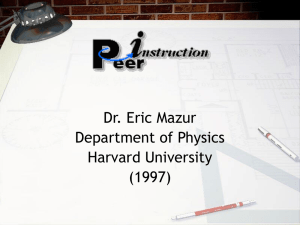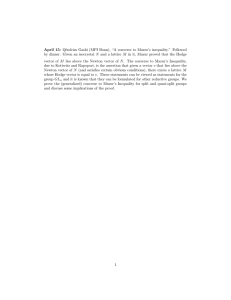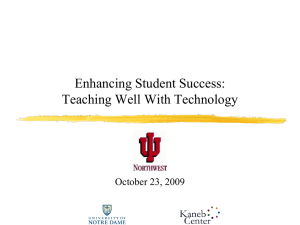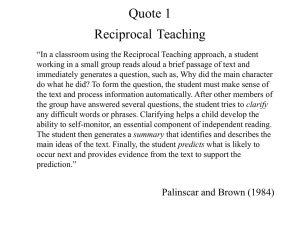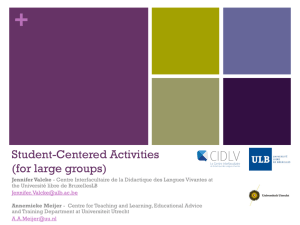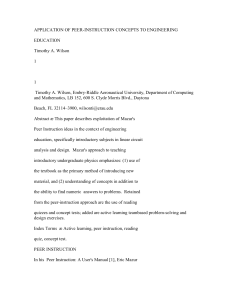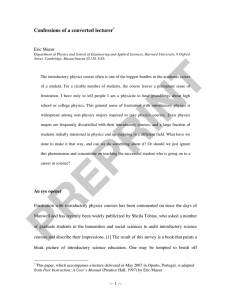Developing Concept Questions
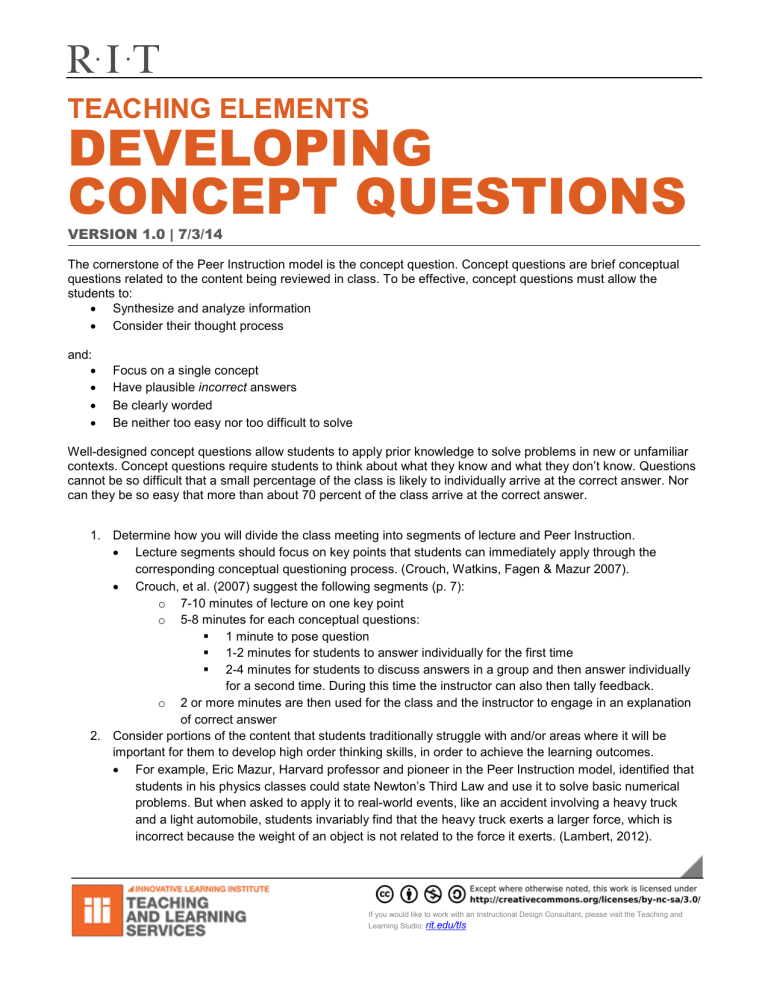
TEACHING ELEMENTS
DEVELOPING
CONCEPT QUESTIONS
VERSION 1.0 | 7/3/14
The cornerstone of the Peer Instruction model is the concept question. Concept questions are brief conceptual questions related to the content being reviewed in class. To be effective, concept questions must allow the students to:
•
Synthesize and analyze information
•
Consider their thought process and:
•
Focus on a single concept
•
Have plausible incorrect answers
•
Be clearly worded
•
Be neither too easy nor too difficult to solve
Well-designed concept questions allow students to apply prior knowledge to solve problems in new or unfamiliar contexts. Concept questions require students to think about what they know and what they don’t know. Questions cannot be so difficult that a small percentage of the class is likely to individually arrive at the correct answer. Nor can they be so easy that more than about 70 percent of the class arrive at the correct answer.
1. Determine how you will divide the class meeting into segments of lecture and Peer Instruction.
•
Lecture segments should focus on key points that students can immediately apply through the corresponding conceptual questioning process. (Crouch, Watkins, Fagen & Mazur 2007).
•
Crouch, et al. (2007) suggest the following segments (p. 7): o 7-10 minutes of lecture on one key point o 5-8 minutes for each conceptual questions:
1 minute to pose question
1-2 minutes for students to answer individually for the first time
2-4 minutes for students to discuss answers in a group and then answer individually for a second time. During this time the instructor can also then tally feedback. o 2 or more minutes are then used for the class and the instructor to engage in an explanation of correct answer
2. Consider portions of the content that students traditionally struggle with and/or areas where it will be important for them to develop high order thinking skills, in order to achieve the learning outcomes.
•
For example, Eric Mazur, Harvard professor and pioneer in the Peer Instruction model, identified that students in his physics classes could state Newton’s Third Law and use it to solve basic numerical problems. But when asked to apply it to real-world events, like an accident involving a heavy truck and a light automobile, students invariably find that the heavy truck exerts a larger force, which is incorrect because the weight of an object is not related to the force it exerts. (Lambert, 2012).
If you would like to work with an Instructional Design Consultant, please visit the Teaching and
Learning Studio: rit.edu/tls
HEADER [DOCUMENT TITLE]
3. Develop a concept question for that content area.
•
For example, Mazur (1997) has formulated concept tests to correspond to each lecture segment that address definition of force and mass and Newton’s Laws. Here is an example of his conceptual question related to Newton’s third law (p. 187):
4. Consider how to best present the concept question.
•
For example, you may develop the concept as a multiple choice question
•
In some cases, you may share a diagram or image and ask students to locate the correct answer
•
You may use clickers to allow student responses.
REFERENCES
Crouch, C. H., Watkins, J., Fagen, A.P., & Mazur, E. (2007). Peer instruction: Engaging students one-on-one, all at once, in Research-Based
Reform of University Physics , edited by E. F. Redish and P. J. Cooney (American Association of Physics Teachers, College Park, MD, 2007),
Reviews in PER Vol. 1, http://www.per-central.org/document/ServeFile.cfm?ID=4990
Lambert, C. (2012). Twilight of the lecture. Harvard Magazine . (March-April). Available online at http://harvardmagazine.com/2012/03/twilight-of-the-lecture
Mazur, E. (1997). Peer Instruction: Getting Students to Think in Class. Retrieved December, 2012, from Mazur Group website: http://mazur.harvard.edu/publications.php?function=display&rowid=3 . This downloadable PDF is an excerpt from Eric Mazur's book, Peer Instruction: A User's Manual (Prentice Hall, 1997). te-peerinstruct-concept.docx
2
